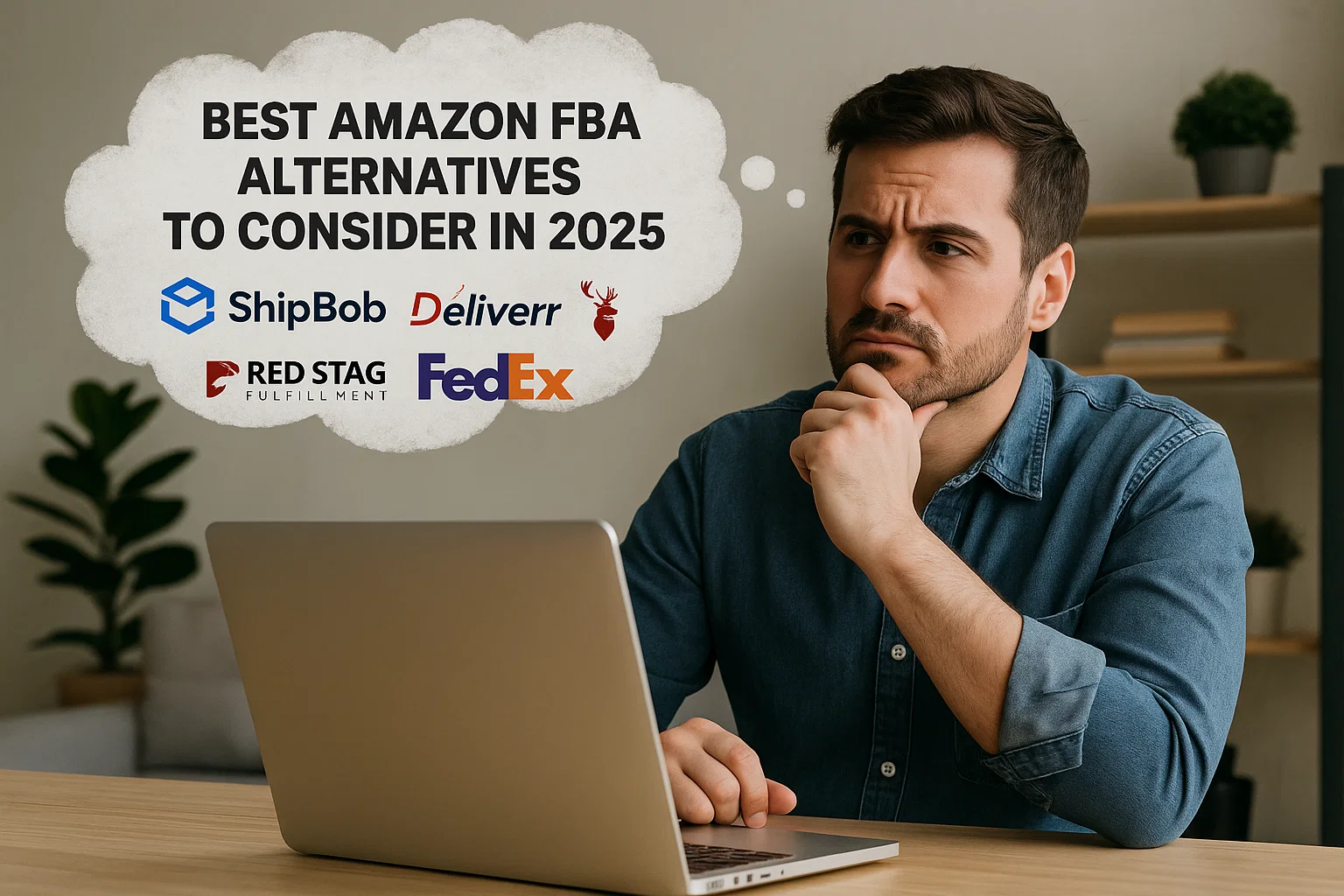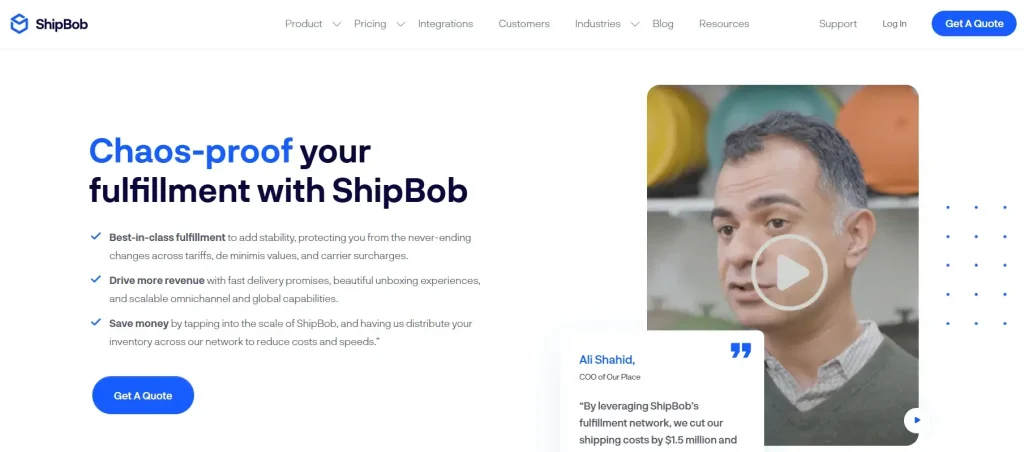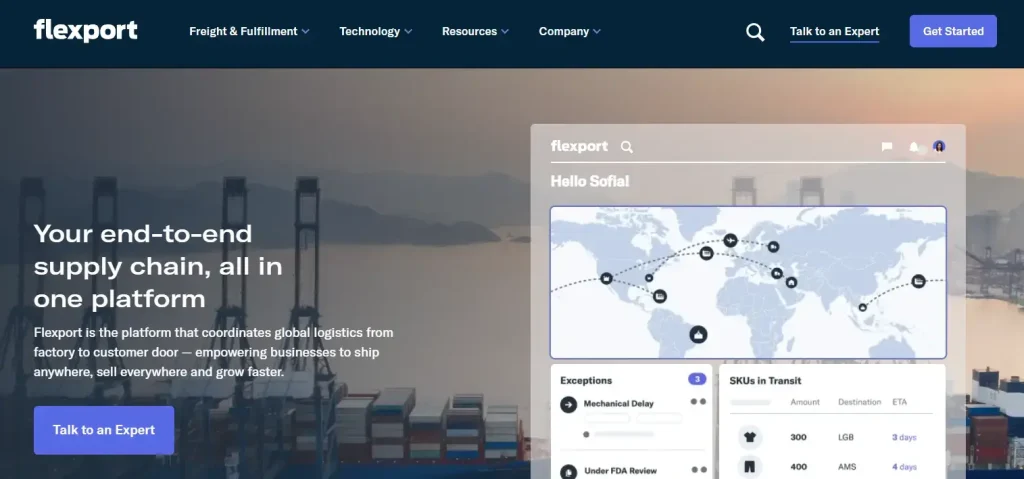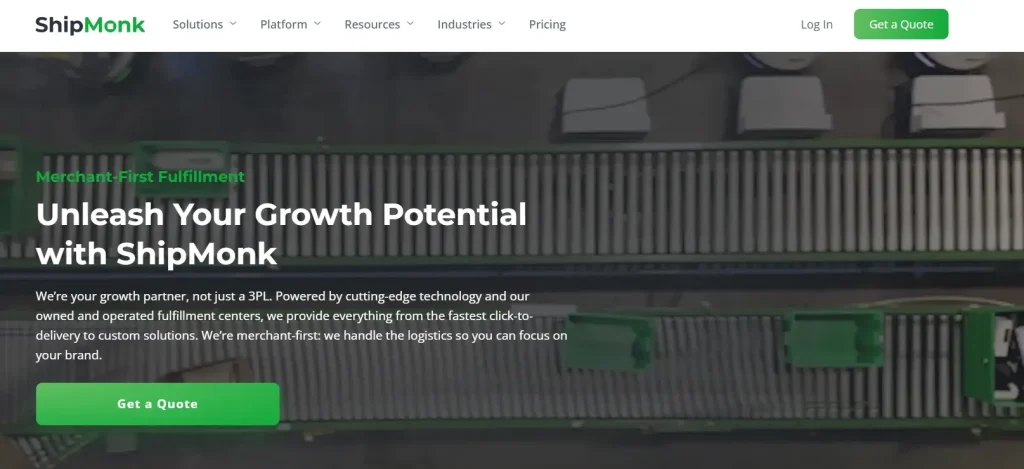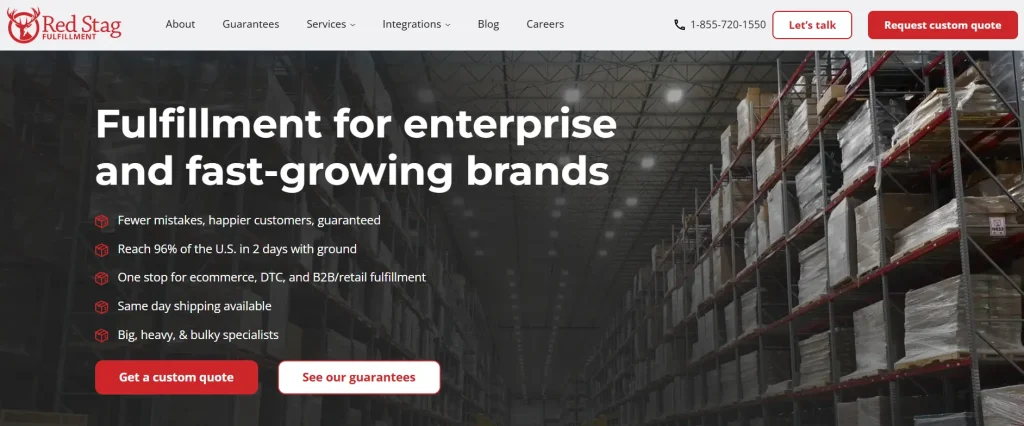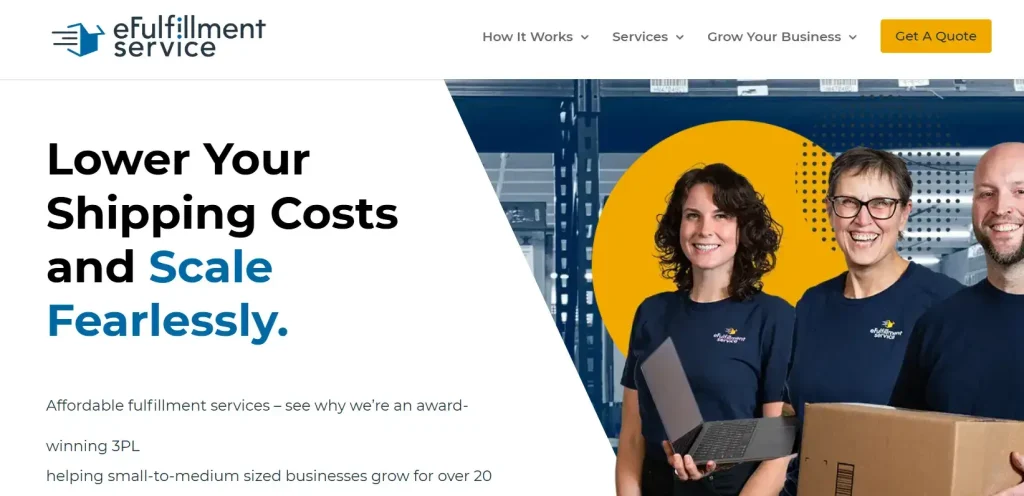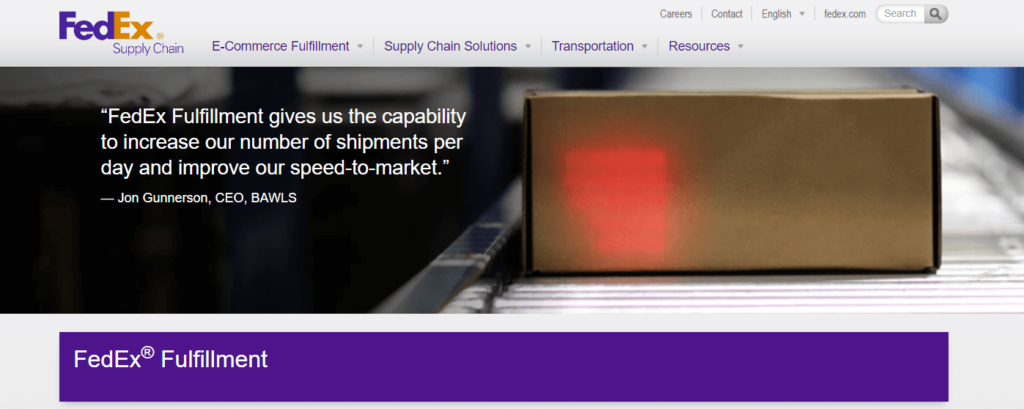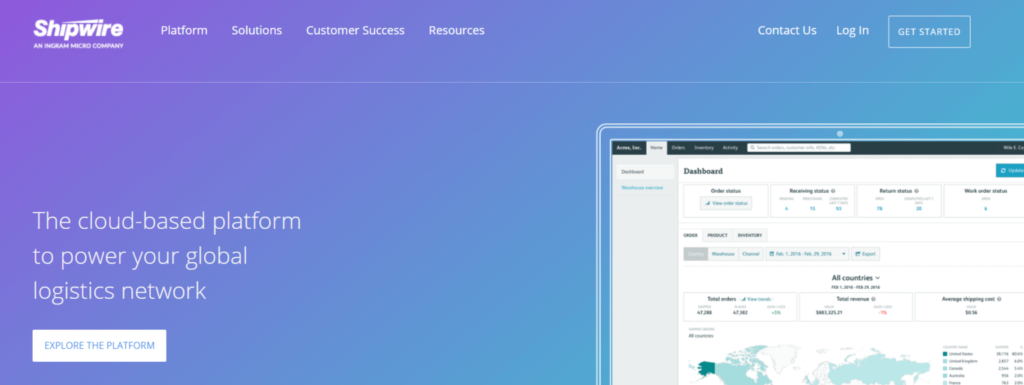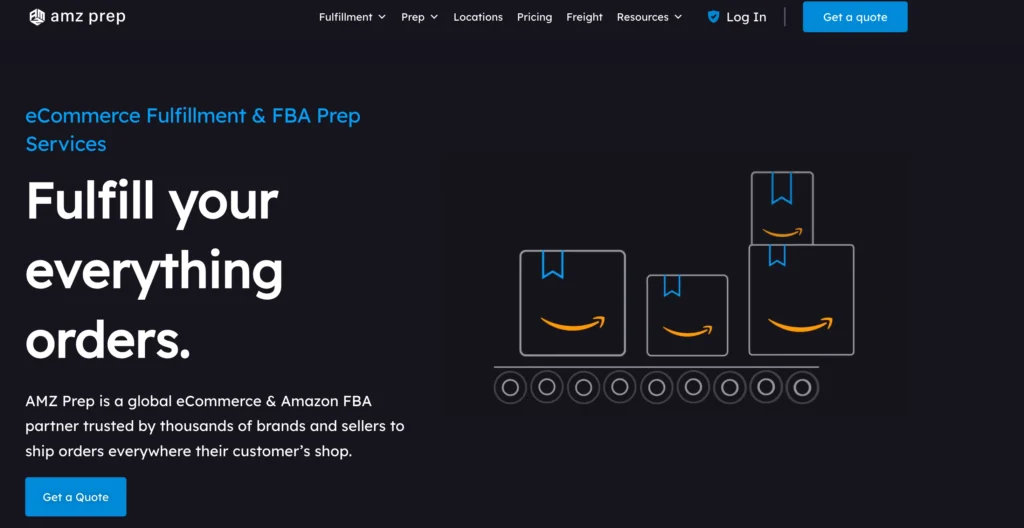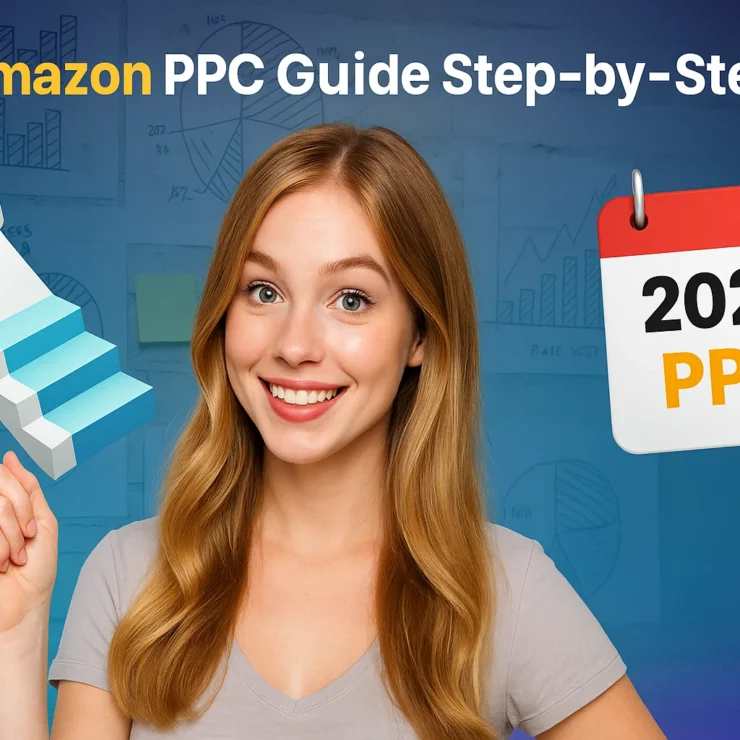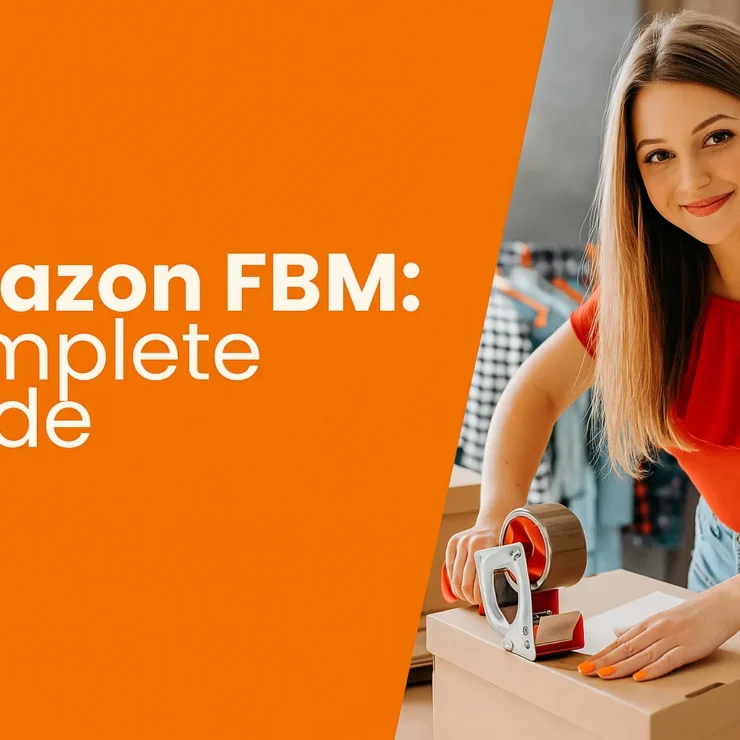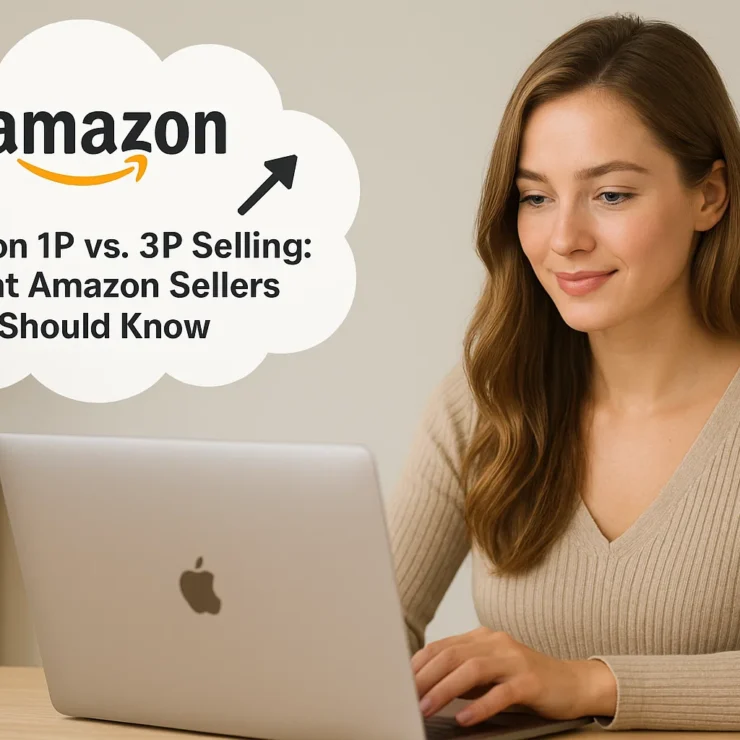As Amazon continues to dominate the eCommerce landscape, its Fulfillment by Amazon (FBA) program has become the go-to choice for many sellers looking to streamline logistics, boost Prime visibility, and scale operations efficiently. However, rising fees, stricter storage limits, and reduced control over branding have prompted a growing number of sellers to explore Amazon FBA alternatives in 2025.
If you’re a professional seller aiming to optimize margins, expand to other marketplaces, or gain greater flexibility in how you run your business, exploring third-party fulfillment providers outside Amazon could be a smart move. With a wide range of logistics partners offering fast shipping, inventory management, and multi-channel support, the options today are more powerful and seller-friendly than ever.
In this guide, we’ll break down everything you need to know about switching from FBA: why you should consider alternatives, top 3PL providers to explore, how Amazon third-party fulfillment works, and how to choose the right option for your business. Whether you’re just starting to evaluate your logistics setup or you’re ready to make the leap, this comprehensive breakdown will give you the clarity and confidence to take the next step.
Why Consider Amazon FBA Alternatives?
Fulfillment by Amazon (FBA) has long been the default choice for sellers looking to leverage Amazon’s massive logistics network, but in 2025, more sellers than ever are reconsidering their options. Here’s why switching to or adding Amazon FBA alternatives might be the smartest move for your business:
Rising FBA Fees
Amazon has gradually increased FBA fees across storage, fulfillment, and return processing. For high-volume sellers or those with lower margins, these costs can significantly cut into profits. Alternatives often offer more predictable or negotiable pricing models.
Storage Limitations and IPI Score Pressure
FBA now imposes stricter inventory limits based on your Inventory Performance Index (IPI). This makes it harder to scale during peak seasons unless you maintain near-perfect metrics. Third-party logistics (3PL) providers generally offer more flexible storage terms.
Lack of Branding Control
When using FBA, your packaging and customer experience are fully branded by Amazon. If you’re building a brand or want to stand out from competitors, a 3PL allows custom packaging, inserts, and more personalized touches.
Multi-Channel Fulfillment
FBA is primarily designed for Amazon orders. While Multi-Channel Fulfillment (MCF) exists, it can be costly and may include Amazon branding. Most Amazon third-party fulfillment providers let you fulfill orders from your Shopify store, Walmart, eBay, and other platforms with full control over branding.
Better Customer Service and Transparency
Many sellers report inconsistent customer support through Amazon Seller Central. With an alternative fulfillment partner, you typically receive dedicated support, faster responses, and direct insights into your inventory and order status.
Avoiding Dependence on a Single Platform
Relying solely on Amazon creates risk. If your account is suspended or policy changes occur, your business could take a major hit. Using FBA alternatives helps diversify your fulfillment operations and protect your brand’s long-term growth.
Learn how to sell on Amazon without holding inventory in our step-by-step 2025 guide.
Top Amazon FBA Alternatives to Consider in 2025
ShipBob
ShipBob is a leading third‑party logistics (3PL) provider tailored for small to mid‑sized e‑commerce brands seeking fast, multi‑channel fulfillment. With an extensive network of 29 warehouses across the US, UK, EU, Canada, and Australia, it enables U.S. two‑day shipping—a big plus for customer.
What makes it stand out:
Seamless Integration: Native connections to Shopify, Amazon, eBay, Walmart, WooCommerce, and more. Integrates with 100+ apps for inventory, shipping, returns, and accounting .
Advanced Reporting & Inventory Control: Real‑time SKU tracking, reorder alerts, and forecast analytics drive better planning.
Customization Options: Supports brand packaging, inserts, climate‑controlled storage, and FBA prep fulfillment for Amazon orders.
Transparent Pricing: No minimum monthly spend; pay per pick‑pack, storage, shipping, and returns.
Challenges to consider:
Cost Variability: Some sellers report unexpectedly high storage and shipping invoices.
Service Gaps: Reports include order mishandling, inventory mismatches, and inconsistent customer support across warehouse locations.
Who it’s best for: Brands seeking scalable, branded multi‑channel fulfillment with strong tech integration—but able to closely monitor costs and service levels.
Flexport (Deliverr)
Flexport offers rapid, cost‑effective fulfillment with the unique advantage of marketplace “fast tags” that boost listing visibility on Amazon, Walmart, and eBay.
Key strengths:
Lightning-Fast Fulfillment: Two‑day shipping across major marketplaces makes brands appear Prime‑like without FBA’s constraints.
Transparent Pricing: Flat-fee structure packed with fulfillment and fast‑tag benefits—no hidden surcharges .
Multi‑Channel Sync: Works seamlessly with Shopify, Walmart, Amazon, eBay, and BigCommerce—ideal for sellers with diversified channels.
Potential drawbacks:
Limited Customization: Branding is minimal—custom packaging or inserts aren’t included.
Early Support Woes: Some sellers mention slow onboarding and support hurdles as the company scaled .
Platform Reliance: Standalone SDS or non-marketplace stores may require additional integration tools.
Ideal for: Sellers prioritizing fast, visible fulfillment on multiple marketplaces—especially with modest brand packaging needs.
ShipMonk
ShipMonk is a standout 3PL built for scaling e‑commerce brands, offering advanced tech, international reach, and flexible fulfillment options. What sets them apart is their automation-driven platform, employing Cubiscan dimensioning, automated picking routes, and MonkProtect insurance to deliver speedy, accurate fulfillment at scale.
Pros:
Integrates natively with Shopify, Amazon, Walmart, and more across 150+ platforms .
A friendly “Happiness Engineer” account manager supports every client.
Multiple U.S. and international warehouse locations help reduce shipping time and cost.
Features ROI-focused tools: real-time tracking, forecasting, returns, and transparent billing .
Cons:
Reviews reveal occasional service/execution gaps—lost items, billing discrepancies, and inconsistent support.
Pricing can escalate unexpectedly for special projects or complex storage needs.
Some small brands report high shipping rates and issues offboarding inventory.
Ideal for: Brands scaling rapidly with multi-channel needs and desiring robust automation—but who can closely manage performance and costs.
Build your brand with our complete guide to creating an Amazon storefront in 2025.
Red Stag Fulfillment
Red Stag Fulfillment specializes in premium logistics for heavy, oversized, or fragile goods. They manage everything with “white glove” care—palletizing, kitting, real-time imaging, and meticulous handling. Their networks span central U.S. locations, enabling reliable 2–3 day ground delivery.
Pros:
Exceptional accuracy—premium picks & packs with strict QA.
Ideal for high-value or bulky SKUs; handles pallet-to-door shipments.
Data-driven dashboard provides inventory visibility and billing transparency.
Offers specialized services like FBA prep, kitting, returns, and custom packaging.
Cons:
Not cost-effective for lightweight or low-cost items.
Limited geographic footprint may lead to higher shipping rates in some zones.
Requires higher order minimums and monthly pick counts.
Ideal for: Sellers of furniture, outdoor gear, supplements, or industrial products that need careful handling and consistent fulfillment quality.
Explore Amazon retail arbitrage and how it works with our detailed 2025 beginner’s guide.
eFulfilment Service
If you’re a small to mid-sized eCommerce seller looking for a cost-effective and flexible fulfillment partner, eFulfillment Service (EFS) is one of the best Amazon FBA alternatives available. Founded in 2001, EFS has earned a reputation for simplicity, transparency, and customer service.
What makes eFulfillment Service stand out is its no minimum order requirement, making it perfect for startups and low-volume sellers. Their pricing model is straightforward with no hidden fees—no setup fees, no long-term contracts, and no tricky surcharges.
EFS integrates with popular marketplaces like Amazon, Walmart, eBay, and Shopify. Sellers can manage their inventory, orders, and shipments through a user-friendly online dashboard. They also provide FBA prep services, making them a great backup solution for Amazon sellers who need more flexibility or want to avoid storage restrictions.
Pros:
No minimums or long-term contracts.
Transparent pricing with no hidden fees.
Excellent support and onboarding for small sellers.
Offers Amazon FBA prep, kitting, and returns management.
Cons:
Only one fulfillment center (U.S. based), which could increase shipping times for certain regions.
Limited automation compared to some larger competitors.
Ideal for: New or growing eCommerce sellers looking for simplicity, affordability, and personalized service.
Compare the best Amazon repricer tools in 2025 to help you stay competitive and win the Buy Box.
FedEx Fulfillment
FedEx FulFillment, launched as part of the FedEx Supply Chain network, is a premium logistics and fulfillment solution catering to businesses that need speed, scalability, and global reach. Backed by one of the most trusted names in shipping, this service is particularly strong in fast, reliable delivery and reverse logistics.
FedEx Fulfillment allows sellers to store products in strategically located warehouses, fulfilling orders across multiple channels like Amazon, Walmart Marketplace, Shopify, and WooCommerce. The platform includes inventory tracking, returns processing, and real-time analytics.
Its biggest advantage is end-to-end logistics integration. Since FedEx handles warehousing, order fulfillment, and last-mile delivery, businesses benefit from better coordination, faster delivery windows, and reduced shipping costs.
Pros:
-
Seamless integration with FedEx shipping services.
-
Scalable infrastructure for medium to large businesses.
-
Real-time analytics and inventory management.
-
Reverse logistics and returns processing made easy.
Cons:
-
Not ideal for startups or very small businesses due to higher costs and volume expectations.
-
Setup process may be more complex compared to smaller 3PLs.
Ideal for: Established sellers or rapidly growing brands that want a scalable fulfillment partner with fast delivery, global reach, and brand credibility.
Discover how to launch a successful private label product using Amazon FBA in 2025.
ShipWire
Shipwire, a global fulfillment solution owned by CEVA Logistics, is one of the most robust and scalable Amazon FBA alternatives for sellers focused on global expansion and multi-channel distribution. With a network of warehouses across North America, Europe, Asia, and Australia, Shipwire allows businesses to reach international markets with fast and efficient delivery.
One of Shipwire’s strongest selling points is its high level of automation and integration. The platform supports integration with Amazon, Shopify, BigCommerce, eBay, and more, providing real-time order tracking, inventory updates, and intelligent routing based on customer location.
Shipwire also supports custom packaging, branded inserts, and special handling instructions, helping sellers maintain brand identity—something that’s hard to achieve with Amazon FBA. It also offers B2B order handling, making it a great fit for sellers distributing to both individual customers and retail partners.
Pros:
Global warehouse network for international fulfillment.
Strong tech stack and automation features.
Supports both B2C and B2B fulfillment.
Custom packaging and branding options.
Cons:
Pricing can be steep for small sellers or startups.
Complexity may not suit those looking for a simple solution.
Ideal for: Mid to large-scale sellers looking for global fulfillment and customized logistics solutions outside Amazon’s ecosystem.
Master your profits! Discover the smartest Amazon pricing strategies for 2025 and learn how to price like a pro.
AMZ Prep
AMZ Prep is a specialized fulfillment partner built specifically for Amazon sellers, making it one of the most niche yet effective Amazon FBA alternatives available in 2025. While many 3PLs serve a general eCommerce audience, AMZ Prep focuses exclusively on sellers navigating the complexities of Amazon’s platform.
Their services include FBA prep, FBM (Fulfilled by Merchant) logistics, storage, bundling, and even Amazon returns management. AMZ Prep’s facilities are located in the U.S., Canada, and the U.K., giving sellers flexibility to store and ship products based on their target market.
What sets AMZ Prep apart is their deep knowledge of Amazon’s strict guidelines—from labeling and packaging to timing and compliance. For sellers tired of dealing with FBA restrictions or long-term storage fees, AMZ Prep acts as a bridge between maintaining high seller performance metrics and avoiding operational headaches.
Pros:
Built specifically for Amazon FBA/FBM sellers.
Offers end-to-end prep, fulfillment, and returns.
Global warehouses in U.S., Canada, and U.K.
No long-term contracts or monthly minimums.
Cons:
Less ideal for brands focused on non-Amazon sales channels.
May lack advanced features of larger 3PLs.
Ideal for: Amazon-first brands who want a partner that knows the ins and outs of FBA rules, prep needs, and seasonal scaling.
Conclusion
As Amazon grows increasingly competitive, relying solely on FBA may no longer be the best fit for every seller. From rising storage fees to lack of control over branding, many Amazon entrepreneurs are turning to third-party fulfillment providers that offer more flexibility, customization, and better cost efficiency.
Exploring the right Amazon FBA alternatives—whether it’s ShipBob, Deliverr, eFulfillment Service, or AMZ Prep—can empower you to build a scalable and customer-focused business that isn’t tied down by Amazon’s strict operational rules.
By integrating third-party logistics, you gain better control over inventory, delivery speeds, and your customer experience—while still reaching Amazon’s massive audience. The key is to align your fulfillment strategy with your business goals.
Whether you’re diversifying channels or looking to boost margins, 2025 is the perfect time to rethink your fulfillment model.
Learn how Amazon BSR impacts product visibility and discover how fulfillment choices like FBA or its alternatives can influence your ranking success.
FAQ's
Is FBA the only way to sell on Amazon?
No, FBA is not the only way to sell. You can choose FBM (Fulfilled by Merchant) or use Amazon-approved third-party fulfillment services. These options offer more control over branding, shipping, and costs—especially useful for sellers with custom packaging needs or multi-channel strategies.
What are the best Amazon FBA alternatives in 2025?
Some of the top alternatives include ShipBob, Deliverr, eFulfillment Service, FedEx Fulfillment, Shipwire, and AMZ Prep. Each provider offers unique benefits like global warehouse networks, custom packaging, and seamless marketplace integrations to help sellers optimize operations beyond FBA.
When should I consider switching from FBA to a 3PL?
Switch to a 3PL if you’re facing high FBA fees, want better control over customer experience, or plan to expand outside Amazon. A 3PL allows you to centralize logistics across multiple channels, improve margins, and avoid FBA storage penalties, especially during peak seasons.
Contact Us for Tailored Solutions – Stores Automation
Ready to transform your Amazon store and achieve big wins. Sign Up at Stores Automation for personalized solutions that leverage the power of automation for your business. Reach out to us at 302-204-8244 or via email at info@storesautomation.com. For more information, visit our Contact Us page. Embark on the path to e-commerce success with Stores Automation – where small changes lead to big wins!
